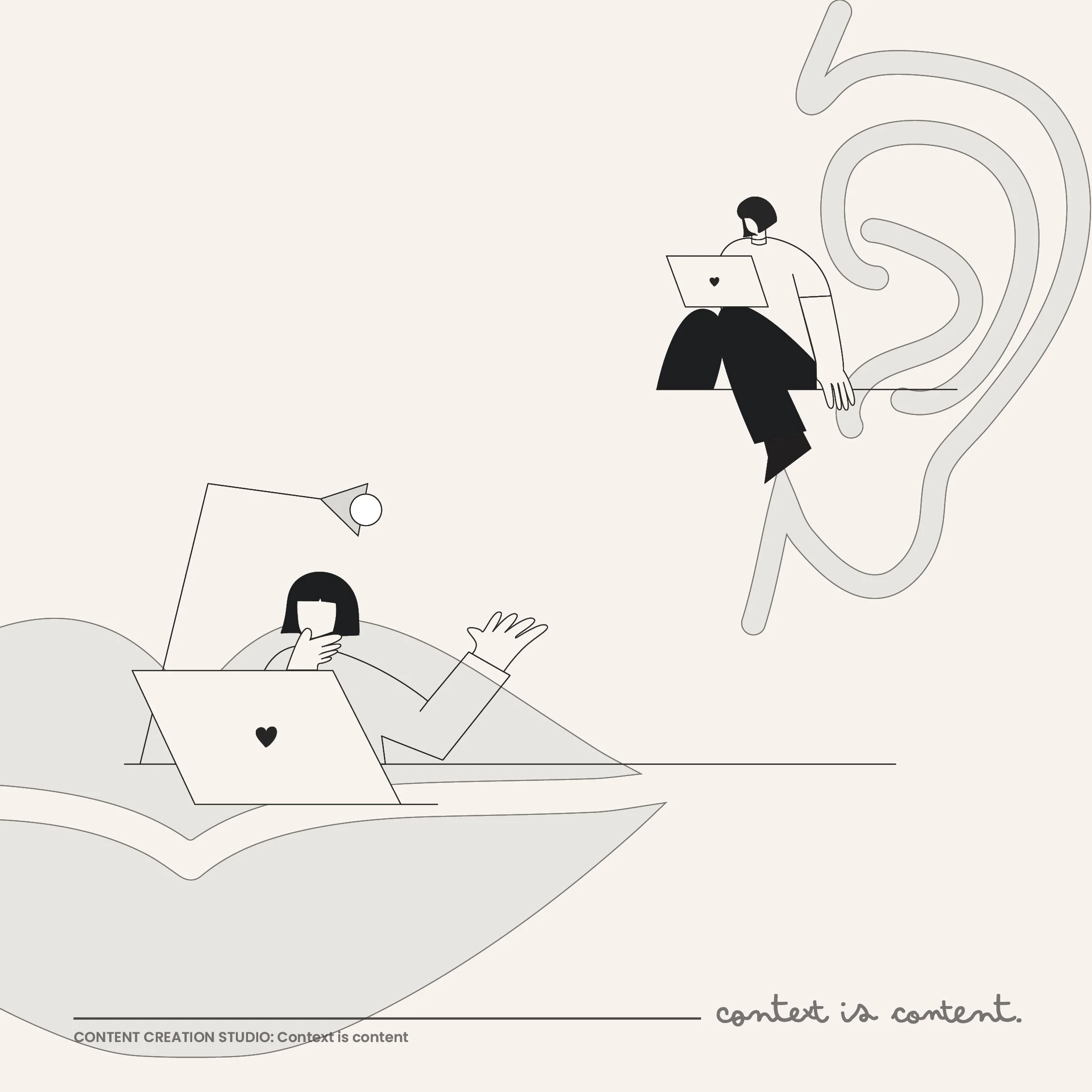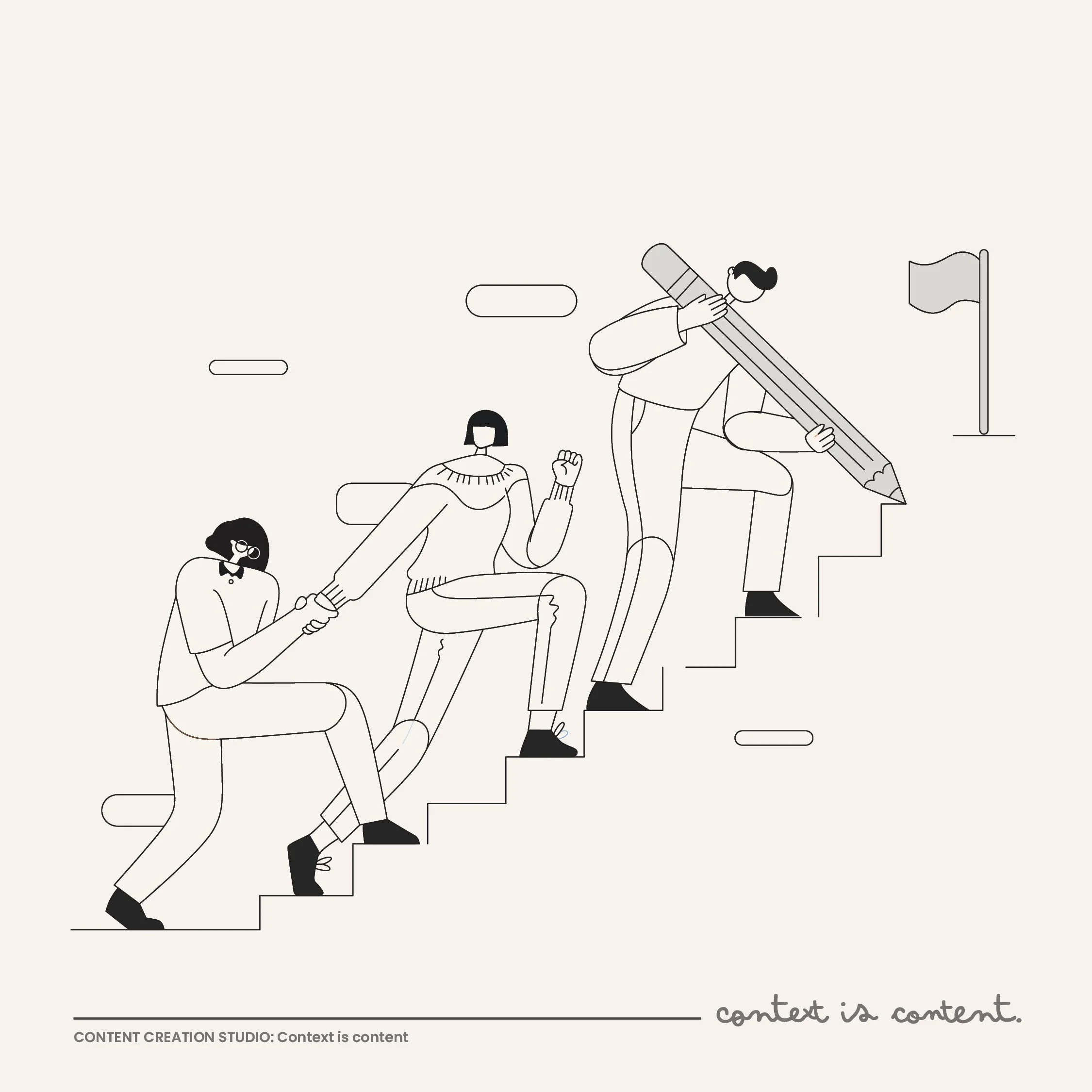How to establish trust and work efficiently with creatives
“The 'why' and the 'how', the very process of design itself, must be equally evident and quite beyond the tyranny of individual taste.” - M.V.
Constructive and genuine feedback helps establish trust
Years ago, I decided to go back to school to refresh my knowledge in certain areas. One of the main prerequisites to enroll in the program was obtaining a passing grade in a course that covers following topics: “How to provide constructive feedback”, “Asynchronous communication”, “How to work within remote teams”. This was way before the pandemic hit. My colleagues and I were surprised to learn that 25-30% of the final mark for each course would depend on our ability to provide and receive constructive and professional feedback. Besides, we were a heterogeneous group of students - different educational, professional, cultural backgrounds and varying levels of English language proficiency.
What was the purpose of the “feedback drill”?
While receiving feedback and getting instructions on how to provide it, as a group, we also discussed very popular topics surrounding creatives: imposter syndrome, writer’s block, working with other creatives etc. By the end of the program, we agreed that mandatory “feedback exercises” helped us become better collaborators, communicators, and most importantly sharpened our critical thinking skills. The trust was established, and we all started appreciating discussions around different perspectives.
By the end of our learning journey, we all agreed that we were on the same page about constructive feedback:
Feedback is not a one-way street. It is a starting point for a professional debate and testing ideas. The purpose of constructive feedback is not to impose personal aesthetics and opinions - Quote
There is a clear distinction between constructive feedback and uninformed opinion. It is helpful to take into consideration the feedback provider’s motive, role, and intent.
Constructive feedback provides solutions within the given context.
The need to be aware of confirmation bias and how it prevents growth.
In my personal opinion, if feedback is objective (backed with facts), consistent and testable against previously implemented standards, it is most likely on point. If feedback consists of genuine suggestions rooted in knowledge, or meaningful questions, it can be classified as constructive feedback. Also, style and tone of feedback should be appropriate to be considered constructive!
We all have strengths and weaknesses, and nobody excels in everything - it’s part of being human.
Here are some great resources on what is constructive feedback:
https://www.mcgill.ca/mercury/students/feedback
https://www.radford.edu/content/dam/colleges/cgps/dnp/docs/Constructive-Feedback.pdf
https://ca.indeed.com/career-advice/career-development/constructive-feedback-meaning
Steps on how to establish trust and work efficiently with contractors: writers, designers, content creators
Imagine you are looking to hire a contractor (writer, designer, marketer) and the idea of selecting one solely based on their portfolio sounds stressful. How are you going to evaluate their work, or provide feedback? What do you value more: their problem solving skills, their approach to work, or personality? How do you establish trust with them and make sure that deadlines will be met? The same type of anxiety arises on the other side as well. I highly recommend reading the “it’s not us, it’s them” blog post to get valuable insights on the other side of the medal.
In my opinion, as long the process of collaboration with a contractor is structured, it is possible to manage expectations and avoid disappointments, while honing professional relationships.
Some steps that may help:
1. Write a detailed brief by defining the project requirements, expectations and goals.
Absence of well-defined brief is a recipe for disaster. It’s like building a house without a floor plan. Every creative project needs to have a defined purpose, audience, desired aesthetic, brand guidelines, context, message etc.
2. Consult the content creator when defining the timeline and milestones.
If you’re familiar with the design or writing process, you can make informed decisions when defining deadlines. In case you’re not familiar with the process, it is prudent to consult with the content creator. Being mindful of the phases in the content creation process will help you set realistic expectations.
3. Respect and believe in the process. Skipping any phase will impact the outcome. If a cake recipe says that preparation time is two and a half hours, would you try to bake such a cake in less than an hour and expect it will turn out well?
4. Specify and include the maximum number and type of revisions in the contract.
5. Define your expectations, while considering the number and length of content creation phases.
6. When providing feedback, be specific and refer to the brief (defined expectations and timeline) to remain objective.
7. Ask questions about visual elements in the design. Remember that good design is based on logic and unnecessary design elements are often mere decoration. Visual communications don’t have to be your forte, as long as your designer could provide logical reasoning behind their work.
8. Look at the content creator portfolio and ask questions about the process, reasoning and ownership as it relates to any particular piece of work. Sometimes, the output could be based on specifically provided instructions, and was not the result of the designer's own problem solving or design esthetic.
Examples of non-constructive feedback following a pro forma brief:
In this section you will see through examples how absence of a brief, lack of knowledge and respect for the content creation process (writing, designing etc) and absence or lack of constructive feedback impacts not just the outputs, but also prevents growth and healthy debate.
Scenario 1: feedback to a writer
Let’s say you work as a technical writer with an educational background in science and writing. Your work is being edited by a third party without you being consulted or getting any feedback. You are confused and notice that rewrites contain mistakes and omissions, but have no opportunity to address them. The “editor” doesn’t provide any feedback to you as they assume their re-writes are self-explanatory. The question arises - Who is accountable here? There is no feedback loop.
Suggestion: There is a great difference between creative, copywriting and technical writing. It is good to be mindful of these differences, and take into consideration brand guidelines, purpose of the project, target audience etc. when doing rewrites or suggesting edits.
Scenario 2: feedback to a designer
In this scenario you are the designer and the brief is as follows: “We are going to organize a team building event in the office over the weekend. The team will be watching a football game and we need to decorate the office for the occasion. Could you design two posters with a football theme as soon as possible?”
This one sentence “brief”, could be translated into the following project requirements:
Design the series of two posters with the football theme
Posters will be used for the team building (internal use) event - watching the football game in the office
Deadline: tomorrow morning
Steps to be taken: 1. purchase stock photos, 2. remove backgrounds and design two posters with similar backgrounds and similar layouts.
Let’s assume you know nothing about football but you decide to do some research on the football poster esthetic:
https://sicovers.com/shop/posters/nfl
https://www.behance.net/gallery/28993183/NFL-Player-Posters-All-32-Teams
https://fineartamerica.com/shop/posters/football+players
Here are your deliveries:
You receive the following feedback: “This is aggressive. Start from scratch. There are so many free images on the internet. I am sending you some that I like.” Images are below.
Food for thought:
Do you see any connection between the provided image and the research on the football poster aesthetic?
What would you learn from this feedback?
How would you proceed from here?
What does “aggressive” mean in this context? Which words would you associate with the sport?
Is it necessary to redesign posters from scratch, would it be possible to improve them instead?
Which part of the initial brief have you not addressed as the designer?
Suggestion: If the brief writer wanted to use specific images, or apply their own esthetic, they could have included it in the brief from the get go. You would then simply ask the brief writer to describe what they envisioned, instead of trying to figure it out on your own based on the research performed with a very tight deadline. Constraints are good when the deadline looms.
Scenario 3: style and tone of feedback delivery matter
In my opinion, content creators should be able to explain the reasoning and logic behind their work. There is a huge difference between being arrogant or defensive and taking a firm stand while demonstrating why a certain solution is the best.
Let’s say you are being presented with new brand guidelines designed for your consulting firm. Your in house graphic designer starts working on a new project and does their best to follow the new guidelines. They get feedback from the senior brand design team member asking them to make changes in the implementation of guidelines. As the suggestions don’t seem to be in accordance with guidelines, the designer kindly asks for clarification. However, the answer received from the senior “brand designer” makes them puzzled: “I have been working with the redesigned branding since its conception. If you don't think I have the authority to speak about the branding, please talk to the director. I would not be offering this feedback if I don’t think I was qualified to speak on behalf of the brand image”
Style, tone and professionalism matter.
Conclusion:
When working with content creators, a well-defined brief, clearly stated expectations and constructive feedback will facilitate a successful collaboration. Perhaps, it’s easier to think of a brief as an expression of one’s intent. Those who want to genuinely connect, communicate and successfully collaborate, wouldn’t they want to be transparent, inclusive, realistic and objective? Constructive feedback demonstrates respect for the people, processes and resources.






